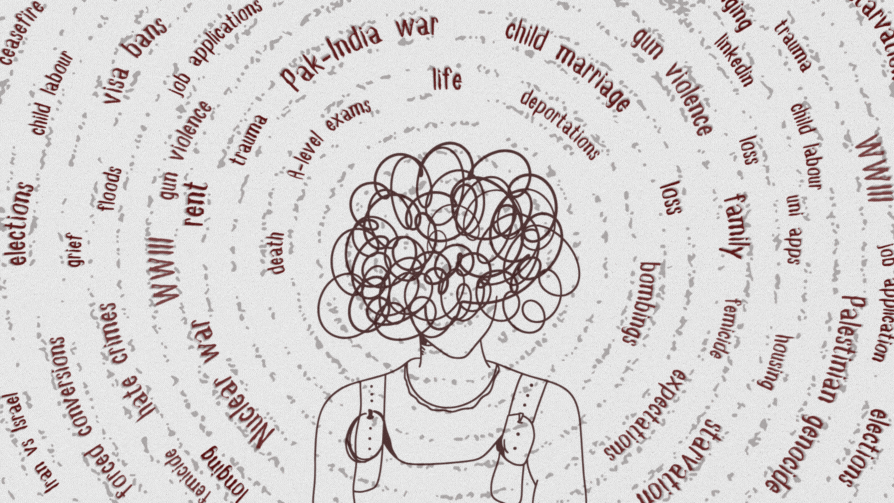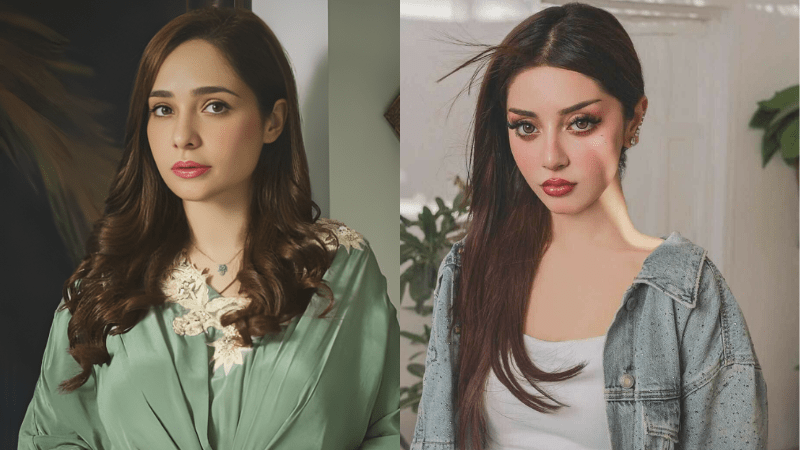Whose art is it anyway? Kiran Saleem questions authorship in latest exhibition
There is probably no better way to understand our current situation than through the devices of the past. After all, the purpose of studying history is to learn where we have come from and pave the best possible route to the future. As Martin Luther King Jr. once said, “We are not makers of history, we are made by history”. The works of Kiran Saleem in her solo show “To See or Not to See” at Sanat Initiative uses art from the Renaissance and later to critique the cultural and social milieu of today and asks questions about identity, authorship, censorship and more.
Kiran Saleem acknowledges that her work is not just about one particular subject; she is addressing a myriad of concerns in each piece, which delivers a certain depth to her work. She paints iconic artworks originally by the old Masters; Leonardo Da Vinci, Raphael, Courbet, Rembrandt, Monet, Frida Kahlo and the like. She chooses to replicate the works in the artists' technique and color scheme, but creates an illusion of a printout of the actual artwork taped onto the surface, sometimes next to a half-finished reproduction. In other places the painting is cropped in a way that it focuses on certain areas of relevance in order to make a point, allowing it to be taken out of context and placed against a contemporary backdrop.

Her work is blatantly trying not to act like the actual masterpieces, and this in itself questions the idea of the original. Saleem notes that most of the world’s experience of these masterpieces is through their computer screens, printouts, posters and pictures in art books. Even those who have seen the actual paintings have done so from several feet away through a sheet of protective glass. So is this distant piece of art far removed from our everyday existence the real thing, or is it the piece of printed paper that we can touch and closely study? Or is the replication of that printed version by another artist the real thing?
Saleem believes the work is as much hers as the original artist’s, as she has lived with it, labored over it, and presented it in her own unique way to make a comment based on her experience of the world. It has come into being through her hands, so why can it not be seen as hers?
This brings us to another question of authorship, which she drives home with her piece “Self”. This is a large blank canvas with a little patch cropped out from one of Rembrandt’s paintings bearing only his signature. She deals with the signature as an image unto itself, a form of self portrait of the artist. Ironically, while the signature is that of Rembrandt, it is now part of her work. This also makes one delve into the significance of the signature and its power to authenticate and indicate ownership, or even add value in certain cases.

Another point Saleem makes with this series pertains to identity of the artist and how the face was routinely used throughout history as kind of a proof of authorship. Her interpretation of someone else’s ‘self-portrait’ presented as her own work reveals the complexities of identification and ownership. She has used self-portraits of Courbet, Frida Kahlo, Jonathan Richardson and Rembrandt in various forms.

The use of Raphael’s portrait in “Untitled IV” (above) is interesting as this is actually the portrait of Bindo Altoviti, which is commonly mistaken as Raphael himself, a fact that only reinforces the point the artist is making.

Elsewhere we see commentary on the perception of morality and censorship in our current times. Using artworks like the Origin of the World by Courbet in the piece “Origin of Origins” is quite clever, as this piece was the center of much controversy due to the subversively realistic and crude portrayal of the female genitalia. Remarkably enough, the controversy has followed the masterpiece to the 21st century, where it is even dubbed by many as pornography.
The closely cropped image exclusively focuses on this highly sexualized and taboo area of the female body which coincidentally is where every living soul enters the world through, and Saleem’s iteration with masking tape acting as a censor blob (or a blockade?) points out our disgust of it, even in painted form. It makes one marvel at how much we have achieved as a species and yet not much has really changed at the elemental level.
In “Untitled VI” (below) again Saleem deals with similar issues, where she uses Courbet’s self-portrait “The Desperate Man”, and cropped out details from Courbet and Cranach’s works showing scenes of violence and nudity. The masking tape that covers the desperate man’s eyes, the unknown breast and the wounds of the torture victim both helps draw connections between the works and comment on the cover-up of the ugly truths in our modern society. This idea also emerges as a site specific mural of sorts where the artists attempts to hide cracks on the wall with masking tape.

In “Broken Promises” (below) she instead looks at the once sacred covenant of marriage that is now cheapened and desecrated by modern values. The cropped image is taken from the famous “Alnolfini Portrait” by Jan Van Eyck, a painting of a married couple, seen as a symbol of matrimonial bond and companionship, which Saleem subverts by tearing it in half where the hands of the couple are clasped. It makes one wonder whether this bond was ever so strong to begin with, or whether it only ever went as deep as the first layer of paint in a perfectly crafted picture.

Saleem’s appropriation of historically significant works in the context of the present creates a dialogue between different eras with much more in common than we might anticipate. We find that not much has changed over the centuries when it comes to our collective conservative sensibilities and perceptions of authorship, and our experience of aesthetics. Each work deals with this theme simultaneously with other major concerns addressed by particular works, allowing us to read them in a multitude of ways. Yet, there are those who choose to stay on the surface and just see it as high quality, near-perfect replicas of the old masters. So it all comes down to whether we choose to see, or not to see.













Comments